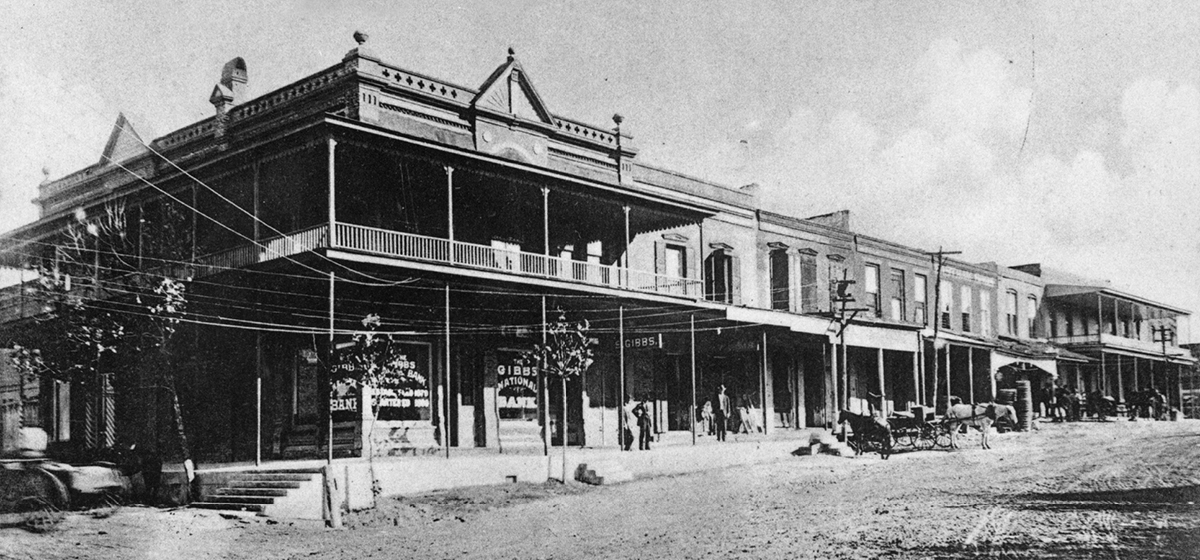Photos by Melanie Schoettle

The Parker family came from the Eastern seaboard and, in classic pioneer fashion, moved west. A contingent of that family ended up in Texas, getting fresh soil and a fresh start. They were on the edge of the Indian Territory, and a group of Comanche and Kiowa attacked them, killing five people and abducting five people, including nine year-old Cynthia Ann Parker. She was raised as a Comanche, and she had three children. In 1860, her Indian settlement was attacked by the cavalry, and they almost killed her, but they noticed she had blue eyes. They took her to Fort Worth, discovered who she was, and “reunited” her with her white family, but she never readjusted, and she never saw her children again.
His name was Quannah. He was a Comanche warrior for much of his life, but he surrendered in 1875, moved to Oklahoma, and became a conciliatory figure, citing his white mother as one of the reasons he preached peace between whites and Indians. He actually helped the Comanche people survive and helped bridge the cultural gap. He’s a larger-than-life figure.
It was a difficult choice, because you want to balance reality and taste. It was a violent time and place, a 40-year war, and often women and children and families were targets, and it was horrific. I had to describe those things to provide a sense of the horror.

I think he believed it, based on what he did. He was generous, he took people in, and he reached out. I don’t mean to underestimate his ego or his potential for brutality. I am not painting him as a saint, but I think his fundamental motivation was to protect his family and the Comanche nation and build bridges. I expect leaders to be politicians, and Quannah was a good one.
That’s an interesting comparison. I think there are similarities. Sam Houston delivered Texans from Santa Anna, so he was very popular and successful. But I didn’t know a lot about Houston before writing the book. He spent a lot of time with the Cherokee, and whenever he seemed to be at the end of his rope in the white world, he would retreat to the Indian world and be replenished, if you will. He tried to be a conciliatory figure, believing there was room in Texas for both Native Americans and Texans. He pushed hard as a man of peace. He contrasts with James Parker, who saw the Indians as a disease that must be exterminated. If we would have listened to Houston and Quannah Parker more, things would have been much better.

They had to leave, because James was a rough guy with many enemies. He was an outsider, a bit of a drunk, and a religious fanatic. But he was determined to find his kids, and he becomes the inspiration for the Ethan Edwards’ character John Wayne plays.

 In these scenarios, the cultures set out to protect themselves, as they see their interests. Do you find this evolves into self-destructive behavior?
In these scenarios, the cultures set out to protect themselves, as they see their interests. Do you find this evolves into self-destructive behavior?Yes, absolutely. It coarsens your society, and it’s self-defeating. You are creating a new generation of enemies. In all those ways, I see self-destructive behavior, sad behavior—people trapped in this tit-for-tat violence…inevitably it becomes generational and is transmitted. It takes extraordinary people, like Quannah Parker for example, to find a way to end the cycle. But it’s easy for outsiders to see. It’s not our families. It’s harder to prescribe a remedy.
People do share some similar values—protecting their families, having opportunities. You have to believe we share some common humanity, some sense of values, and therefore it is worth describing to each other these types of situations so we may learn from them.
 You began the book with the idea of doing a “making of” book. That grew into you addressing both the movie and the non-fiction behind the movie.
You began the book with the idea of doing a “making of” book. That grew into you addressing both the movie and the non-fiction behind the movie.When I returned to the US after being a foreign correspondent, I wanted to write an American book. What could be more American than The Searchers? Originally, I wanted to write the book about John Wayne and John Ford. What could be more fun than that? But, it didn’t take long to realize there was a beginning story, that this movie is only one rung on this ladder. But, the movie is in many ways still the center of the book.
They are extraordinary, with many complex and interesting things happening in their lives and work. But, I didn’t set out to write anything new about them. I tried to capture their core and explain why they did what they did. I begged, stole, and borrowed from all kinds of works. They were part of a larger story, so this wasn’t a biography, but a story with characters. And, I knew they would be great characters, so I just had to learn as much as I could and present them as freshly as possible.
 The Searchers often makes the top ten lists of the greatest movies. What does the movie tell us about ourselves and human nature?
The Searchers often makes the top ten lists of the greatest movies. What does the movie tell us about ourselves and human nature?Well, it’s a visually striking film, and I think that captures critics’ attention. It’s so beautifully filmed, visual storytelling at its finest. But the movie is also unsettling, because it has racist elements to it. It’s kind of a racist movie about racism. It offers iconic western themes and characters like the man on horseback, the Indian fighter, the virginal princess, the noble savage. It gives great themes, and then it subtly undermines them, pointing out the problems and flaws of these icons. The man on horseback, the John Wayne character, turns out to be a bit of a psychopath on a quest of vengeance and hatred. Ford is delivering our icons, undermining them, and making them deeper. The film’s stature has risen, as each generation has read into it some of its sensibilities and concerns. And that’s one of the reasons it has had staying power.


